| Years in Sweden: | 1559 1560 1561 1562 1563 1564 1565 |
| Centuries: | 15th century · 16th century · 17th century |
| Decades: | 1530s 1540s 1550s 1560s 1570s 1580s 1590s |
| Years: | 1559 1560 1561 1562 1563 1564 1565 |


Events from the year 1562 in Sweden
| Years in Sweden: | 1559 1560 1561 1562 1563 1564 1565 |
| Centuries: | 15th century · 16th century · 17th century |
| Decades: | 1530s 1540s 1550s 1560s 1570s 1580s 1590s |
| Years: | 1559 1560 1561 1562 1563 1564 1565 |


Events from the year 1562 in Sweden
| | This section needs expansion. You can help by adding to it. (July 2015) |
| | This section needs expansion. You can help by adding to it. (July 2015) |
| | This section needs expansion. You can help by adding to it. (July 2015) |
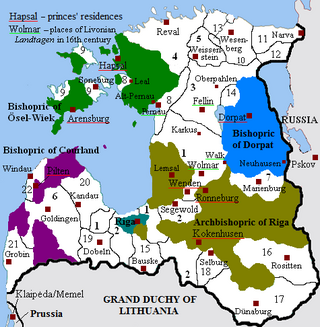
Livonia or in earlier records Livland, is a historical region on the eastern shores of the Baltic Sea. It is named after the Livonians, who lived on the shores of present-day Latvia.

Eric XIV was King of Sweden from 1560 until he was captured in a rebellion led by his brother John in 1568 and formally deposed 26 January 1569. Eric XIV was the eldest son of Gustav I (1496–1560) and Catherine of Saxe-Lauenburg (1513–1535). He was also ruler of Estonia, after it placed itself under Swedish protection in 1561.
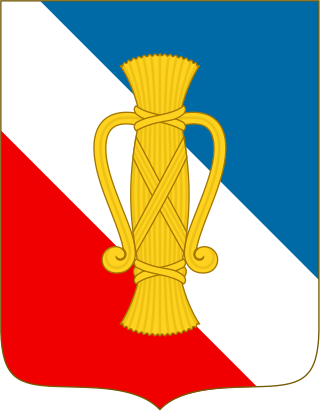
The House of Vasa or Wasa was an early modern royal house founded in 1523 in Sweden. Its members ruled the Kingdom of Sweden from 1523 to 1654 and the Polish–Lithuanian Commonwealth from 1587 to 1668. Its agnatic line became extinct with the death of King John II Casimir of Poland in 1672.

The Early Vasa era is a period that in Swedish and Finnish history lasted between 1523–1611. It began with the reconquest of Stockholm by Gustav Vasa and his men from the Danes in 1523, which was triggered by the event known as the Stockholm Bloodbath in 1520, and then was followed up by Sweden's secession from the Kalmar Union, and continued with the reign of Gustav's sons Eric XIV, John III, John's son Sigismund, and finally Gustav's youngest son Charles IX. The era was followed by a period commonly referred to as the Swedish Empire, or Stormaktstiden in Swedish, which means "Era Of Great Power".

Eric IX, also called Eric the Holy, Saint Eric, and Eric the Lawgiver, was a Swedish king in the 12th century, c. 1156–1160. The Roman Martyrology of the Catholic Church names him as a saint memorialized on 18 May. He was the founder of the House of Eric, which ruled Sweden with interruptions from c. 1156 to 1250.

Eric "X" was the King of Sweden between 1208 and 1216. Also known as Eric the Survivor, he was, at his accession to the throne, the only remaining son of King Canute I of Sweden and his queen. The name of his mother is not known, but may have been Cecilia.

The Livonian War (1558–1583) was fought for control of Old Livonia. The Tsardom of Russia faced a varying coalition of the Dano-Norwegian Realm, the Kingdom of Sweden, and the Union of the Grand Duchy of Lithuania and the Kingdom of Poland.
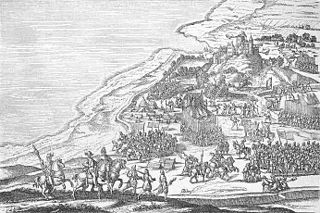
The Northern Seven Years' War was fought between the Kingdom of Sweden and a coalition of Denmark–Norway, Lübeck, and Poland–Lithuania between 1563 and 1570. The war was motivated by the dissatisfaction of King Frederick II of Denmark with the dissolution of the Kalmar Union, and the will of King Eric XIV of Sweden to break Denmark's dominating position. The fighting continued until both armies had been exhausted, and many men died. The resulting Treaty of Stettin was a stalemate, with neither party gaining any new territory.

Barth is a town in Mecklenburg-Vorpommern, Germany. It is situated at a lagoon (Bodden) of the Baltic Sea facing the Fischland-Darss-Zingst peninsula. Barth belongs to the district of Vorpommern-Rügen. It is close to the Western Pomerania Lagoon Area National Park. In 2011, it held a population of 8,706.

The Treaty or Peace of Saint-Germain-en-Laye of 19 June (OS) or 29 June (NS) 1679 was a peace treaty between France and the Electorate of Brandenburg. It restored to France's ally Sweden her dominions Bremen-Verden and Swedish Pomerania, lost to Brandenburg in the Scanian War. Sweden ratified the treaty on 28 July 1679.
Magnus II of Saxe-Lauenburg was the eldest surviving son of Duke Francis I of Saxe-Lauenburg and Sybille of Saxe-Freiberg, daughter of Duke Henry IV the Pious. In 1571 Magnus II ascended the throne after his father Francis I resigned due to indebtedness. Two years later Francis I, helped by his other son Francis (II), deposed Magnus II and re-ascended. Magnus' violent and judicial attempts to regain the duchy failed. In 1588 he was imprisoned for the remainder of his life.

Estonia under Swedish rule (1561–1710) signifies the period of time when large parts of the country, and after 1645, entire present-day Estonia, were under Swedish rule. In the wake of the breakup of the State of the Teutonic Order, the Baltic German local nobility in the areas of Harrien (Harjumaa) and Wierland (Virumaa), as well as the city of Reval (Tallinn) in June 1561 asked for and were granted protection by the Swedish king Eric XIV, leading to Swedish involvement in the Livonian War. At the conclusion of hostilities in 1583, Sweden was in control of the northern parts of modern Estonia and Dagö ; the Duchy of Estonia was created from this territory. Following renewed wars between Poland and Sweden, the southern parts of present-day Estonia were incorporated into Sweden by the Treaty of Altmark in 1629. Sweden also conquered the island of Ösel (Saaremaa) from Denmark, and were thus in control of all of present-day Estonia.

The Dano-Hanseatic War from 1426–1435 was an armed trade conflict between the Danish-dominated Kalmar Union and the German Hanseatic League (Hansa) led by the Free City of Lübeck.
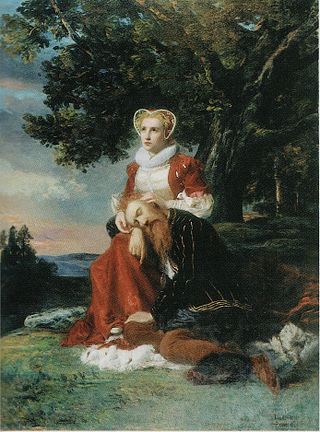
Events from the year 1568 in Sweden
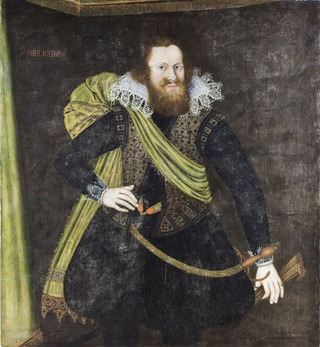
Events from the year 1569 in Sweden
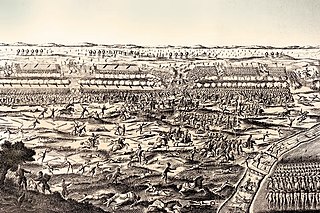
Events from the year 1565 in Sweden

Events from the year 1563 in Sweden
Ronneby Bloodbath was a massacre conducted by the Swedish army in the then-Danish city of Ronneby in Blekinge during the Northern Seven Years' War on Monday, 4 September 1564.
Charles de Mornay, was a Swedish court official, diplomat and royal favorite. He was the central figure of the Mornay plot of 1574.
The Mornay plot was a plot in 1574 to assassinate John III of Sweden, free the imprisoned Eric XIV of Sweden and place him or Charles IX of Sweden upon the Swedish throne. The plot was hatched and planned by Charles de Mornay, a Swedish courtier of French Huguenot origin with international contacts. It was one of three major plots to free the imprisoned Eric XIV, preceded by the 1569 Plot and succeeded by the 1576 Plot.